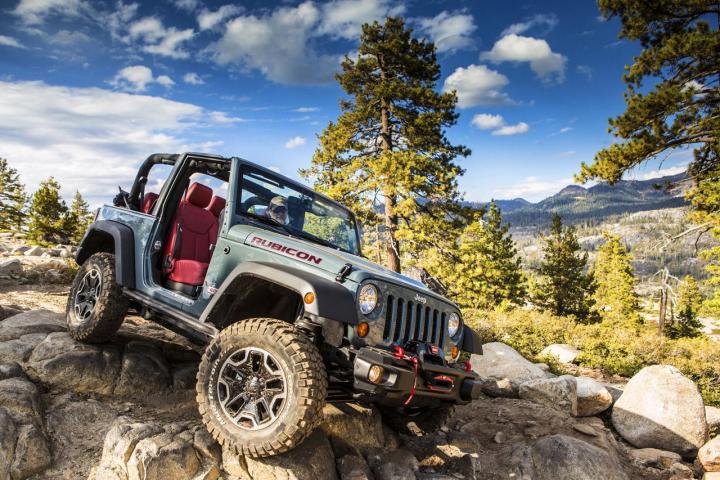
The Ground Mobility Vehicle (GMV) prototype started life as a diesel-powered Wrangler Rubicon (pictured), a model that’s assembled in Toledo, Ohio, but that’s not offered to buyers in the United States. Developed largely for Europe, the oil-burning off-roader uses a 2.8-liter four-cylinder turbodiesel engine that sends 197 horsepower and a stout 339 pound-feet of torque to all four wheels. Hendrick has upgraded the electrical system from 12 to 24 volts, and it has fitted a beefier suspension setup as well as bigger brakes on both axles.
The U.S. Army is looking for a cheap and light unarmored vehicle capable of carrying troops and their gear from A to B, so Hendrick has tossed out the Wrangler’s top, doors, and body, and has added a full roll cage for the sake of safety. The two passengers riding in the front get seats, while the remaining six passengers have to settle for benches. Finally, the contractor has made a host of modifications to the Wrangler’s body to facilitate the task of transporting it in a plane’s cargo hold, and to allow soldiers to quickly install accessories, including guns, if needed.
All told, the Jeep Wrangler GMV prototype costs about $75,000 to build, a sum that represents about $40,000 more than a base-model Rubicon. That sounds like a lot for a Wrangler, but Hendrick explains the off-roader is relatively affordable because it shares a handful of components with a mass-produced model. Additionally, company officials stress that running costs are low because Wrangler parts are readily available most anywhere in the world.
The Army hasn’t started testing prototypes yet, though it’s expected to release a request for proposals by the end of the year.
Editors' Recommendations
- Jeep Wrangler 4xe hit with battery fire recall, owners told to stop charging
- Jeep Wrangler vs. Jeep Wrangler Rubicon
- Plug-in hybrid variants of Jeep Wrangler, Compass, Renegade will rumble into CES




